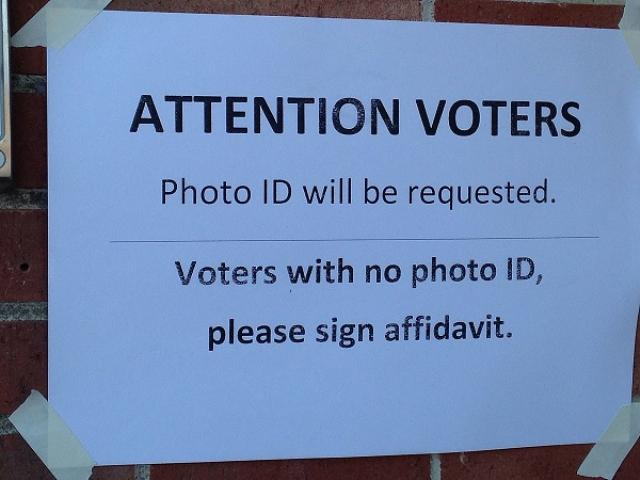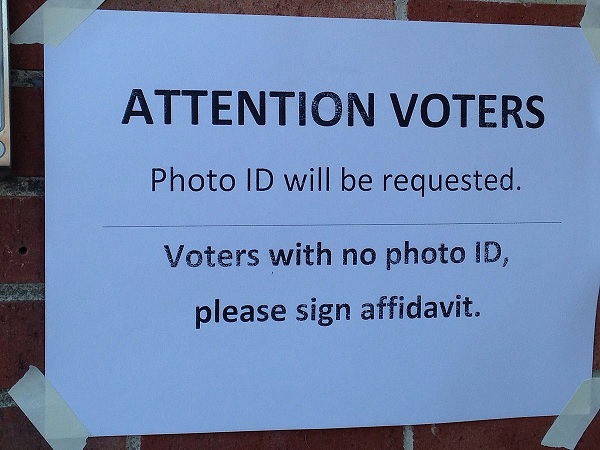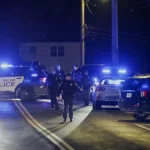
In March of this year, voters residing in Huntington Beach, California approved a measure requiring voters to show ID prior to casting a ballot. On September 29, however, California Gov. Gavin Newsom approved legislation — SB 1174 — to outlaw such measures throughout the state. The rationale for the prohibition of such identification of voters is stated in the legislation itself.
In Section 1, at (a)(2), it states that such requirement for ID is not necessary because, when registering to vote, California already requires adequate identification — “a driver’s license number, a California identification number, or the last four digits of their social security number.” (Note that California does not require an ID itself — which, in two of the alternatives, would include photos — but only the “number.”)
Later in the section, at (a)(4), California goes on to assert:
“Voter identification laws have historically been used to disenfranchise low-income voters, voters of color, voters with disabilities, and senior voters.”
In passing, we may ask how Newsom and his colleagues know that the supporters of such ID laws had such a nefarious purpose, and not the one they said they had — that is, to ensure the integrity of the election?
Aside from that, aren’t voter registration requirements a necessary part of voter-identification laws in any case? If so, would not then the numbers that California requires for just as easily “disenfranchise low-income workers [etc.]” as they would if the actual ID documents they are supposedly taken from were required under the process, not of registration, but of actually voting?
To put it another way, if persons are required to produce one of three identification numbers for registration, how can requiring them to produce, when voting, the same identification number, but (for the driver’s license or state ID) with a photo — how does that somehow become a nefarious scheme to disenfranchise voters?
One more question: if an identification number is required at registration, but not when voting, then how are election judges supposed to know that the person appearing before them is the same person that registered? If such ID is not going to be required when a person votes, then is the point of requiring it for registration?
(One might also ask why an ID without a photo — a social security number — is also accepted, and also, why only part of it is required?)
To such, SB 1174’s implicit answer, at (a)(3), appears to be that California will conduct “further steps to ensure election integrity, including signature verification checks… [SB 1174 goes on to also cite “mandatory partial recounts, and ballot tracking” — measures that have nothing to do with the issue of voter identification].”
Such implicit answers, of course, presume that, for identification, signatures are just as reliable as photo IDs. Really? Consider the following:
In the 2020 election, the rate at which signatures were rejected in Arizona was 0.03 percent, while in neighboring New Mexico, it was 5.0 percent. In the municipal election in Paterson, New Jersey’s third largest city, it was 20.0 percent.
<img alt captext="Mark Buckawicki” class=”post-image-right” src=”https://conservativenewsbriefing.com/wp-content/uploads/2024/10/californias-prohibition-against-photo-id-requirements-for-voting-is-unconstitutional.jpg” width=”450″>Now, what are we to make of this? That voters in Arizona are 166 times more honest than ones in New Mexico, and 664 times more so than those in Paterson, New Jersey? Or is it that the verification process in Arizona is 166 times less stringent than New Mexico’s, and 664 times so than Paterson’s? Or is it a combination of both? Who’s to say?
To look at this another way, what does this presumptively reliable “signature verification check” (SVC) process actually entail? Specifically, who is authorized to make such checks?
On this, SB 1174 is silent. Nor does a keyword search in Section 10005 of California Election Code (to which SB 1174 has been or will be attached) for the SVC phrase and for the first two words of it produce any result.
Which means that California can implement it in any way it chooses to do so.
It might, for example, follow the process as once implemented in Florida, as described in a 2012 NY Times report. In it, not a single person, but a board of officials — three or more — all reviewed each signature. The Times reports the following exchange between two board members:
“This ‘r’ is not like that ‘r,'” Judge Augustus D. Aikens Jr. said, suggesting that a ballot should be rejected.
Ion Sancho, the elections supervisor here, disagreed. “This ‘k’ is like that ‘k,’ ” he replied, and he persuaded his colleagues to count the vote.
(One may wonder how Florida officials could find the time for such careful examination. One answer is that, in 2012, mail-in voting was not an option for everyone, but was limited only to those unable to appear at the polls. Another is that such review was made in the presence of the Times reporter, which may have increased the degree of attention.)
In any case, this is one example of a “signature verification check.” Another, from 2022, comes from Orange County in California itself. There was no board of county officials involved, but county employees. California resident Robin M. Itzler describes the process:
“What my friends and I observed were … “signature experts” quickly reviewing [at a pace of] eight signatures in approximately five seconds: four primary ballot signatures and four registration signatures.”
As can be seen, there is a world of difference between these two examples. In Florida, the signatures were examined letter by letter. In California, at a rate of 1.25 seconds for every pair of signatures, that was clearly not taking place. (And SB 1174 provides no guidance as to what should take place.)
If there is such a divergence on how much attention is required for the comparison of signatures, and such a divergence in the rate of rejection, then how much confidence can we have in such a process?
With drivers’ photo licenses or state photo IDs, there is no such mystery. Either the voter presents them, or he or she does not. Of course, you can have fake photo IDs too. But here’s an idea — why not require both? The photo ID confirms the voter, and the signature confirms the photo ID? (Gosh, why has no one thought of this?)
This would be the most secure alternative, and, under Article 4 §4 of the U.S. Constitution — which “guarantees” that states will be governed with the consent of the people, California should have no alternative other than the most secure one. In short, under this provision, SB 1174 is not simply contradictory in its own terms, but is unconstitutional.
This article is related to a proposal discussed in the author’s book, Asserting Democracy.
Image: Mark Buckawicki






